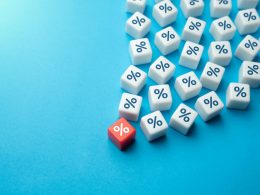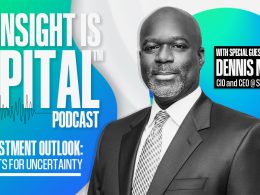For that, we can look to mutual fund flows as a proxy. Here, the story gets much more interesting. After an eight-month period of withdrawals from US equity mutual funds, investors pumped $335 million into US equity funds in the third week of December 2010, according to the Investment Company Institute.
Prior to this inflow, a total of $90 billion was liquidated from these funds since the flash crash last May. Interestingly, and in a turn likely to be a characteristic of 2011, having seen inflows every week since December 2008, bond funds experienced outflows of $4.37 billion during the third week of December 2010.
Watch what they're doing
You can see a cumulative chart of mutual fund flows below. It's an easy case to make that a much greater reversion to the mean for stock and bond fund flows could be a big story in 2011.
Although the spike in Treasury yields we have seen since October 2010 may be petering out in the near term, the path of least resistance for yields remains higher thanks to a much better economic outlook in 2011. You can read more on the outlook for bonds and yields from Rob Williams.
Fund Flows Have Hugely Favored Bonds and Emerging Markets

Click to enlarge
Source: FactSet and the Investment Company Institute, from January 1, 2008 to November 30, 2010. Data based on 36-month sum.
I also believe some of the froth could come out of the emerging markets as China continues to tighten monetary policy; leading to a possible reallocation from emerging markets to US equity funds. You can read more about China and the emerging markets from Michelle Gibley.
Outlook is brighter …
So, sentiment concerns in the short-term notwithstanding, 2011 could be another good year for the stock market, as well as the economy. As you can see in the chart below, ISI's Economic Diffusion Index (which measures the difference between positive and negative economic reports) has clearly picked up steam from the summer slowdown and is nearly back to its earlier highs.
Economic Diffusion Index Surging Again

Click to enlarge
Source: FactSet and ISI Group, as of January 3, 2011.
This reacceleration has inspired an uptick in GDP forecasts both for the fourth quarter of 2010 and the full year of 2011.
There are numerous reasons for this increased optimism, including:
- Taxes are not going higher, while the bill also includes a payroll tax reduction and immediate and full expensing for business investment.
- Leading indicators have reaccelerated and manufacturing is expanding at a seven-month-high pace.
- Initial unemployment claims have significantly broken out to the downside.
- Credit conditions are improving markedly for both consumer and commercial loans.
- Real consumer spending is back in expansion mode, having surpassed its 2007 high (ahead of GDP doing the same).
- Earnings growth remains high and steady, keeping valuations reasonable.
- Core inflation remains contained.
- Merger-and-acquisition activity is picking up sharply, especially among technology and energy companies. You can read more about sectors from Brad Sorensen.
- Long-term yields are up, but short-term rates are low and steady; lending support to the economically important steep yield curve.
- QE2 is having success boosting asset prices and should offset some of the recent drag on the savings rate while boosting household net worth and confidence.
- The election cycle greatly favors the pre-election year (2011), with an average annual gain of over 17% for the S&P 500® index and no down years since 1945.
… but not without its risks
Even the best stories have their twists and troubling story arcs, and there are risks to the bullish story this year. I will be writing a full report on housing soon because it remains important to the economic story and isn't doing much more than bouncing along the bottom presently.
There also remain risks associated with the European sovereign debt crisis, while China continues to tighten monetary policy to combat a budding inflation problem and a real estate bubble.
Finally, the United States is filled with state governments and local municipalities that are in dire straits; many with default threats. These are the elephants in the party room. With investor sentiment leaning so bullish, market vulnerability could erupt from any of these sources and knock some of the stuffing out of the rally.
Ending on a positive note
I'll conclude, though, back on a positive note. Although a pullback is probably overdue and would be healthy, barring any extreme shocks, it would likely be short-lived and shallow. It could also set the stage for another impressive rally as more individual investors become participants.
Copyright (c) Charles Schwab & Co., Inc.













